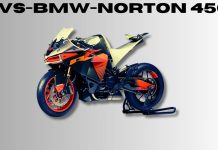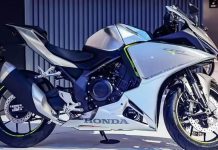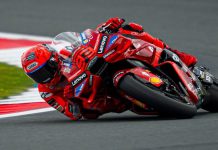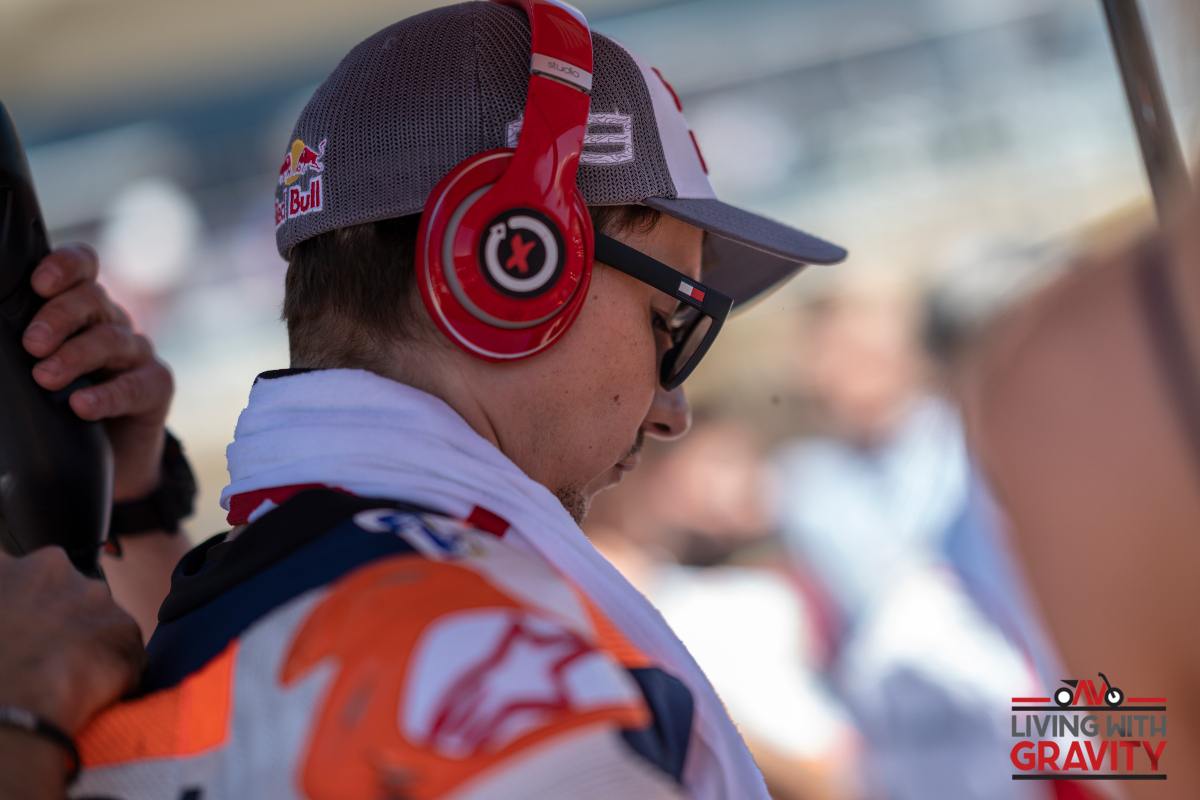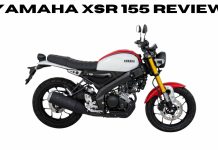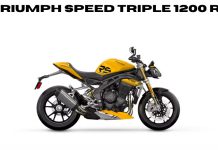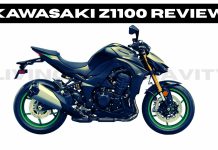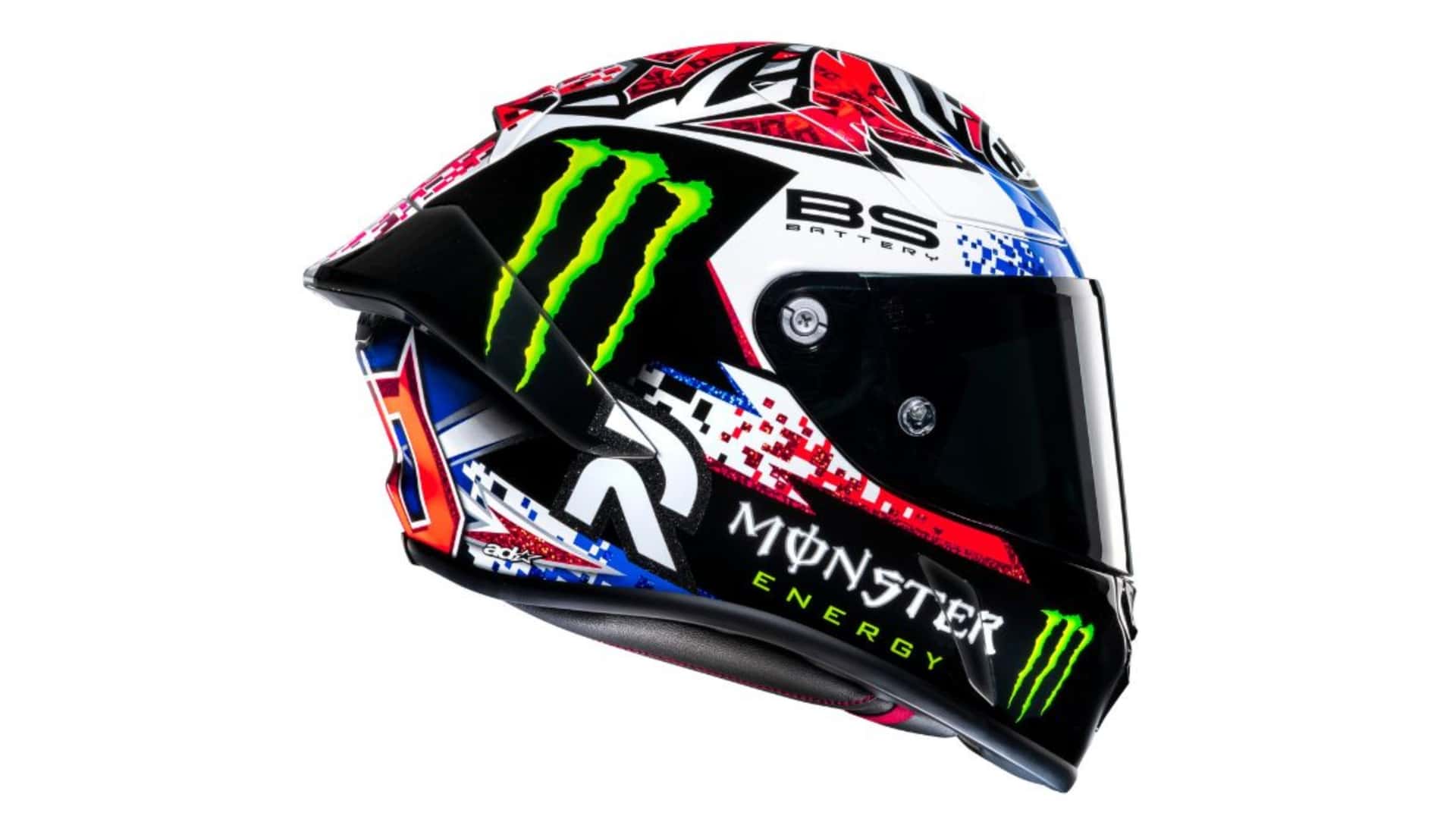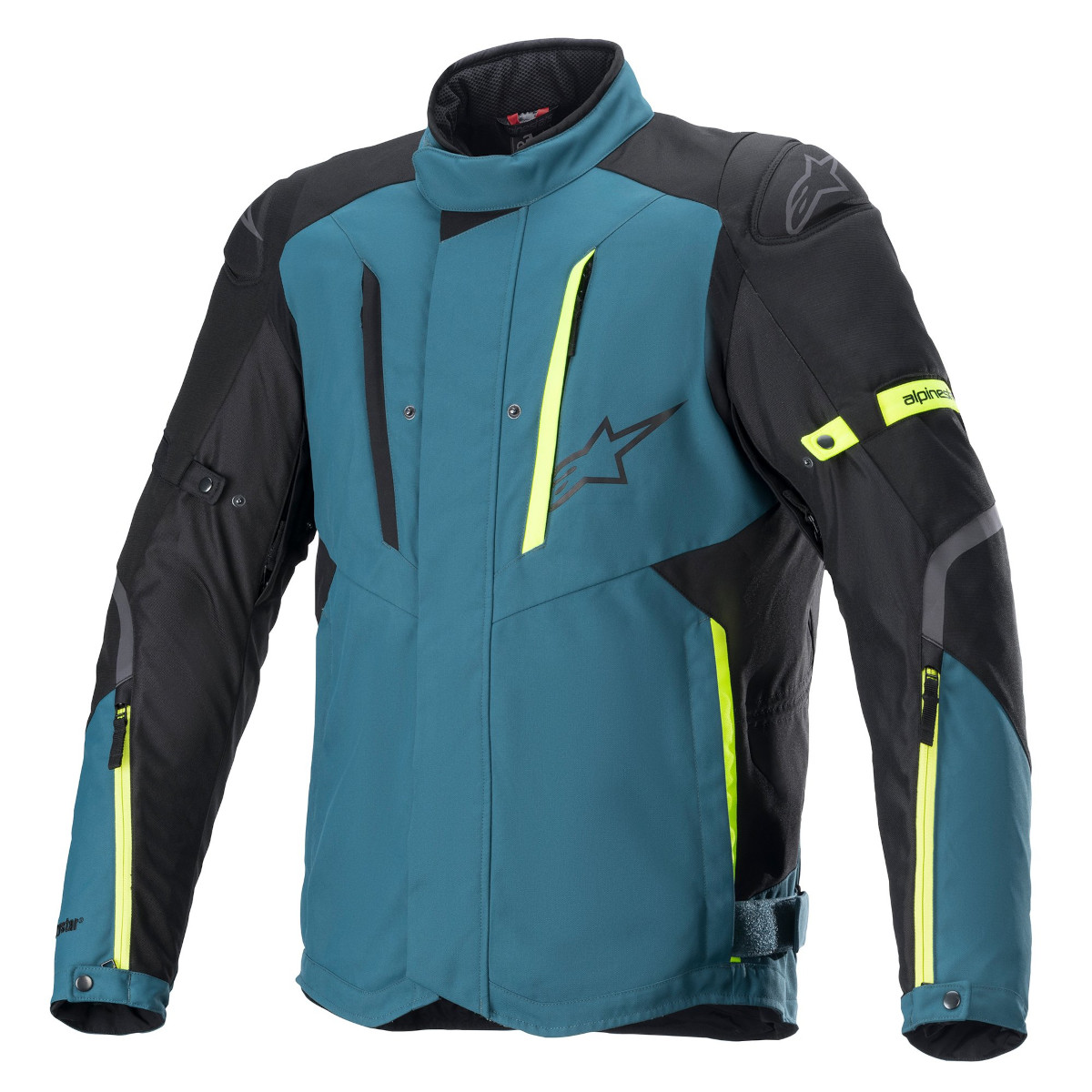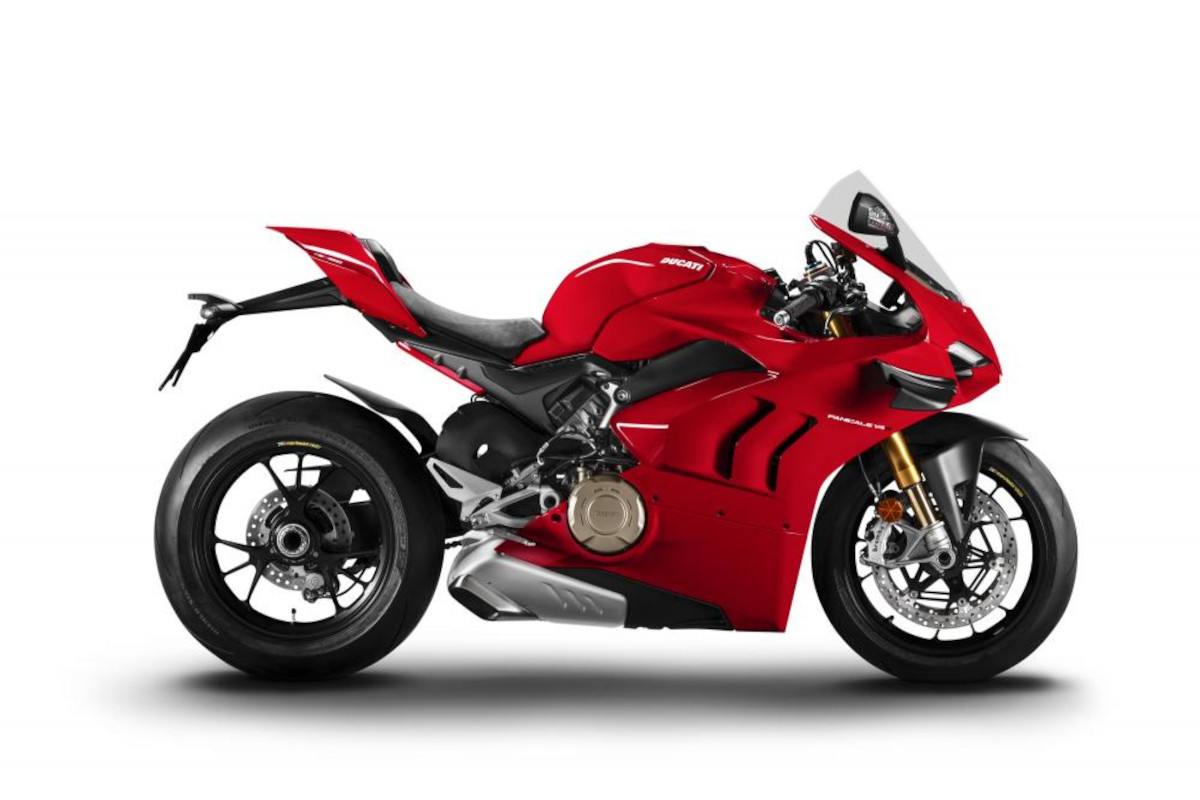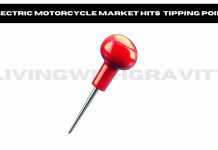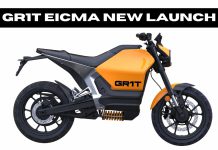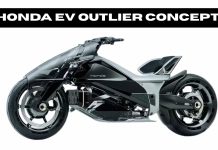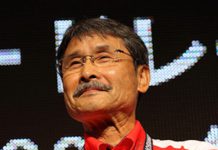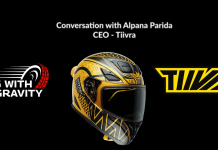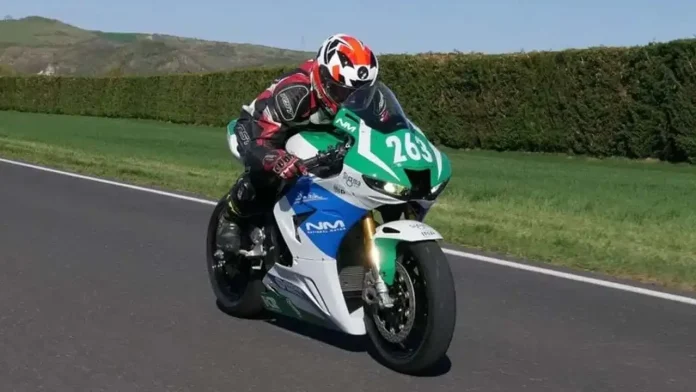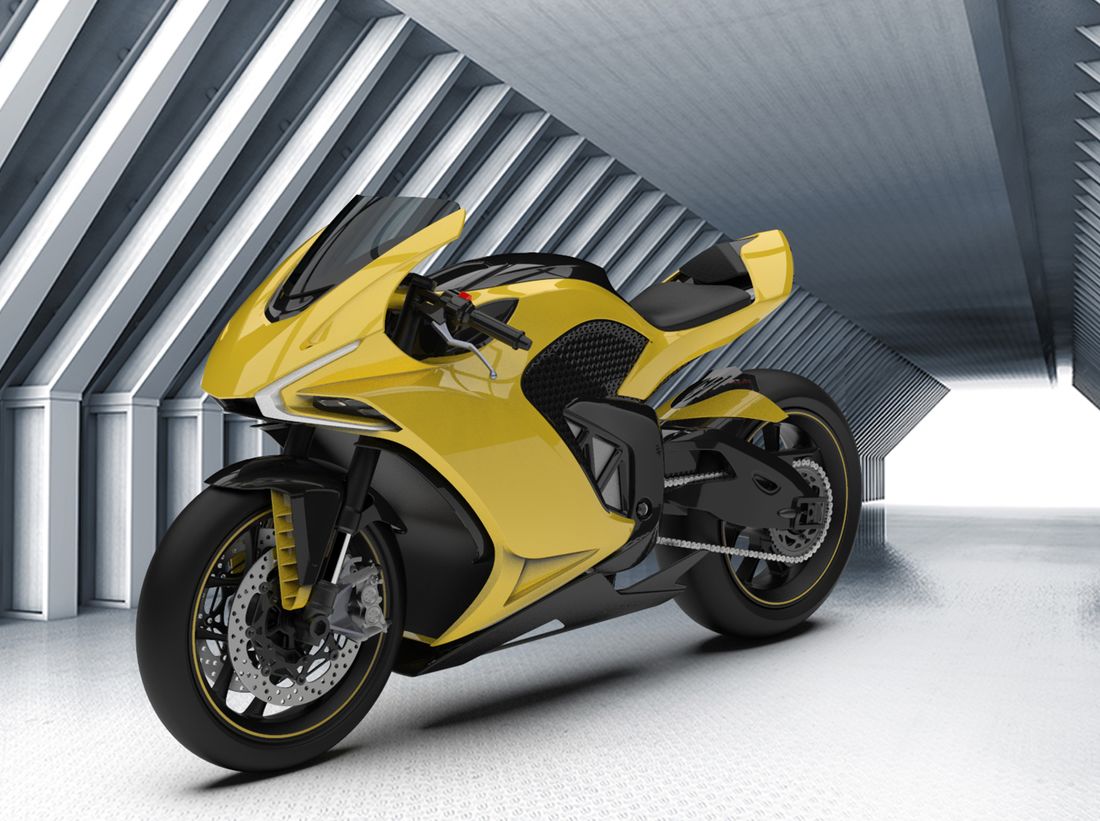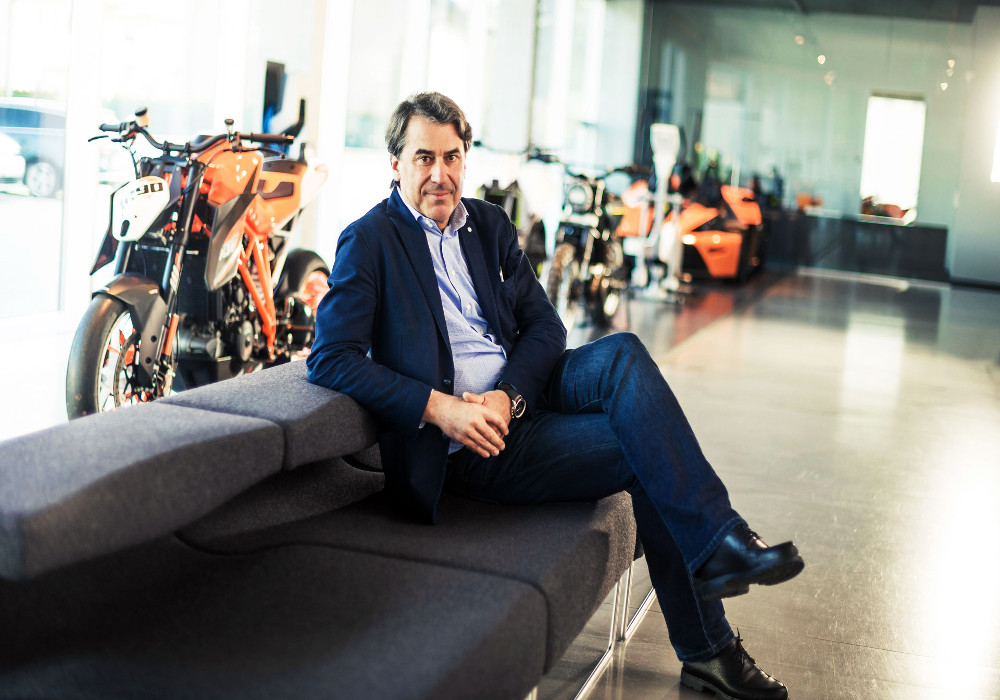1. Executive Summary
Honda, a global leader in powersports, has articulated an aggressive strategy to electrify its product portfolio, aiming for 100% battery-electric and fuel cell electric vehicle sales by 2040.1 This broad commitment extends significantly to its powersports division, where the company seeks to become the dominant provider of electric vehicles worldwide .
However, a notable absence in Honda’s forward-looking presentations has been any explicit mention of an all-electric superbike, a segment widely recognized for its formidable technical challenges . This strategic silence from a manufacturer with a rich racing heritage and established market leadership suggests a deliberate deferral of investment in this high-performance niche, potentially due to perceived insurmountable hurdles or a prioritization of mass-market electric mobility.
The emergence of the Sigma Regen Superbike project, undertaken by engineering students from SIGMA Clermont in France, presents a compelling counter-narrative. This initiative, focused on converting a Honda CBR1000RR-R Fireblade into an electric endurance racer for the Le Mans 24 Hours by 2028-2029, demonstrates the feasibility of addressing these complex challenges through innovative approaches such as advanced energy regeneration and quick-swap battery systems.2
The project’s progression to a working, track-tested prototype highlights that significant advancements can be achieved outside traditional corporate R&D structures. This external innovation creates a unique opportunity for Honda. By strategically engaging with such projects, Honda could gain critical technical knowledge, de-risk future internal R&D, and reinforce its brand image as a pioneer in sustainable, high-performance motorsports, ultimately accelerating its path to leadership in the electric superbike domain.
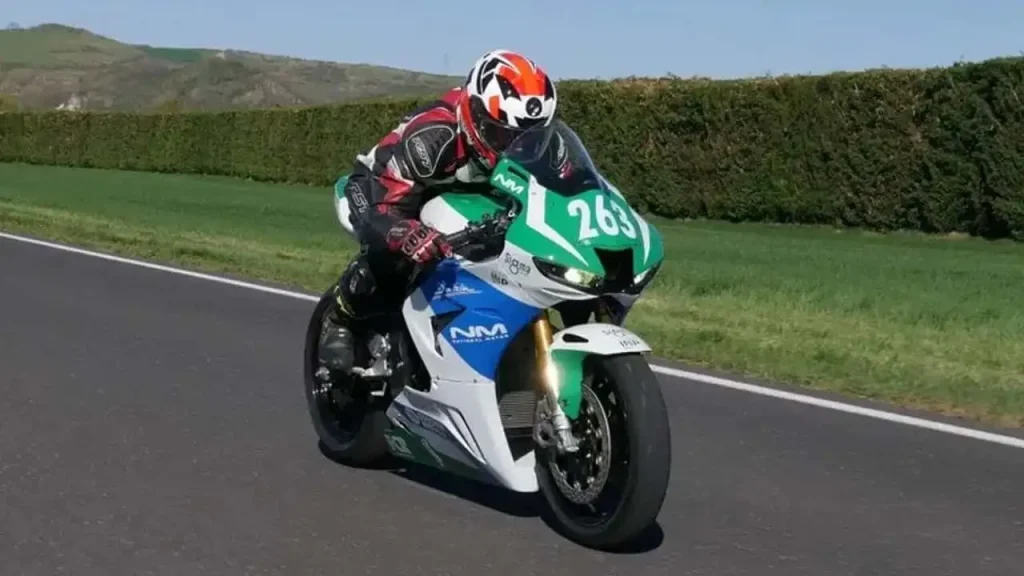
2. Introduction: The Shifting Landscape of Electric Powersports
The global automotive and powersports industries are undergoing a profound transformation driven by the imperative for electrification and carbon neutrality. This shift is reshaping product development, manufacturing processes, and market expectations. Within this evolving landscape, Honda, with its long-standing dominance in the powersports sector, has declared ambitious intentions to lead the charge in electric mobility.
Honda’s Renewed EV Focus and Powersports Ambition
Honda has clearly articulated a long-term vision to achieve carbon neutrality across its entire product range and corporate activities by 2050.1 A cornerstone of this strategy is the commitment to have battery-electric and fuel cell electric vehicles constitute 100% of its new vehicle sales by 2040.1 This overarching goal provides the strategic framework for its aggressive push into electric powersports. Specifically for motorcycles, Honda has set a target of carbon neutrality by the 2040s and plans to introduce 30 electric models globally by 2030, aiming for annual sales of 4 million electric motorcycles.4 This significant investment and ambitious rollout schedule underscore Honda’s intent to leverage its established global leadership in powersports to dominate the electric segment, aspiring to be the “go-to” manufacturer for all electric powersport vehicles sold worldwide . The company’s historical position as the number one seller of powersport vehicles globally provides a strong foundation for this ambition.
The Conspicuous Absence of an Electric Superbike
Despite Honda’s comprehensive electrification roadmap and its aggressive targets for electric motorcycles, a notable omission exists within its stated plans: the absence of any mention of an all-electric superbike . Superbikes, while representing a smaller volume segment, are often considered the pinnacle of motorcycle engineering, serving as halo products that showcase a manufacturer’s technological prowess and define its brand image. This explicitly highlights this gap, acknowledging that developing an electric superbike is “a hard nut to crack” . This observation points to a strategic choice by Honda.
The company’s focus on high-volume, utilitarian, or commuter-focused electric motorcycles, as evidenced by models like the CUV e:, ICON e:, Activa e:, and QC1 4, suggests a pragmatic prioritization of segments with clearer market demand and greater scalability. This approach, while commercially sound, carries the potential risk of ceding the narrative of innovation and high-performance leadership in a critical, image-defining category to more agile, niche players. The strategic silence on electric superbikes, therefore, is not merely an oversight but reflects a calculated posture, which external projects like the Sigma Regen Superbike directly challenge.
3. Honda’s Electrification Strategy: Ambitions, Realities, and Gaps
Honda’s electrification strategy is multifaceted, encompassing a broad transition across its automotive and powersports divisions. While ambitious, the implementation of this strategy reveals both significant commitments and certain pragmatic adjustments based on market realities and technological readiness.
Overall EV and Hybrid Vehicle Strategy
Honda’s long-term environmental commitment is clear: achieving zero environmental impact for all products and corporate activities by 2050, with a foundational goal of 100% battery-electric and fuel cell electric vehicle sales by 2040.1 This commitment is supported by initiatives such as securing over 60% of North American electricity from renewable wind and solar power through virtual power purchase agreements.1 However, the path to full electrification is not without its challenges. Honda has recently revised its global EV sales ratio target for 2030 downwards, acknowledging a slowdown in the electric vehicle market.5 In response, the company is strategically positioning hybrid-electric vehicles (HEVs) as a crucial bridge during the transition period, with plans to launch 13 next-generation HEV models globally starting in 2027.5 This dual-pronged approach reflects a cautious adaptation to current market dynamics, prioritizing stability and profitability in the short to medium term. Reports also suggest that Honda has faced internal development hurdles, with some pre-production EV prototypes reportedly experiencing hardware and software issues.6 This indicates that even for mass-market EVs, the transition is complex and resource-intensive.
Specific Electric Motorcycle Plans
Within its powersports division, Honda has set aggressive targets for electric motorcycles, aiming for carbon neutrality by the 2040s. The company plans to introduce 30 electric models globally by 2030 and targets annual sales of 4 million electric motorcycles.4 Recent introductions include urban-focused models such as the CUV e: and ICON e: in Indonesia (October 2024), and the Activa e: and QC1 in India (November 2024).4 Concept models like the EV Fun Concept and EV Urban Concept were also unveiled at EICMA 2024.4 These models generally cater to urban commuting and utility, aligning with a strategy for high-volume markets, particularly in Asia.
A key enabler of Honda’s electric mobility strategy is its focus on battery solutions. The company is expanding its “Honda e:Swap” battery swapping services in major Indian cities like Delhi, Mumbai, and Bengaluru.4 This system utilizes the Mobile Power Pack (MPP), a portable, swappable battery designed for various electric mobility products, including motorcycles.7 An example of its application is the Fastport eQuad, an electric quadricycle that uses 1.3 kWh MPPs, with quick swaps taking less than 30 seconds.8 To support this ambitious rollout and reduce costs, Honda plans to open a dedicated electric motorcycle plant in India by 2028, aiming to make EV ownership as affordable as petrol models.4
The Superbike Gap Analysis
Despite these extensive plans and investments in electric motorcycles, there has been no public mention from Honda of an all-electric superbike . This omission is particularly striking given Honda’s rich racing heritage and its global leadership in the powersports market. The current emphasis on mass-market, urban, and utility-focused electric motorcycles, combined with the pragmatic adjustments to overall EV sales targets, suggests a strategic prioritization.
The high-risk, high-cost development associated with electric superbikes, particularly the formidable challenges of battery technology for sustained high-performance and endurance racing, appears to be a segment Honda is approaching with extreme caution, if at all, for internal development. The existing modular battery strategy, while innovative for convenience and cost in smaller vehicles, may not efficiently scale or perform adequately for the extreme power demands and energy density requirements of a superbike, especially for endurance racing. This represents a fundamental constraint of the current battery technology and system design for high-performance applications.
This strategic choice, driven by market realities and internal resource allocation, provides a compelling explanation for the absence of an internal electric superbike project. It is a calculated business decision rather than a mere oversight, indicating that the company may deem such a venture premature or financially unviable under current conditions.
Table 1: Honda’s Global EV/Motorcycle Electrification Targets & Current Models
| Category | Target/Goal | 2030 Projection | Key Announced/Concept Models | Type/Segment | Key Battery/Charging Initiatives | Manufacturing Investments |
| Overall EV Sales | 100% BEV/FCEV by 2040 1 | Below 30% (revised from previous target) 5 | N/A | N/A | N/A | N/A |
| Motorcycle EV Sales | 4 million units annually by 2030 4 | 30 electric models globally by 2030 4 | CUV e:, ICON e: (Indonesia, Oct 2024); Activa e:, QC1 (India, Nov 2024); EV Fun Concept, EV Urban Concept (EICMA 2024) 4 | Primarily urban/commuter/utility | Honda e:Swap battery swapping service 4; Mobile Power Pack (MPP) 7; Fastport eQuad (uses 1.3 kWh MPPs) 8 | Dedicated electric motorcycle plant in India by 2028 for cost reduction 4 |
4. The Sigma Regen Superbike Project: A Glimpse into the Future
In stark contrast to Honda’s cautious approach to electric superbikes, a pioneering project at SIGMA Clermont, an engineering school in France, is actively pursuing the development of an all-electric superbike based on a Honda CBR1000RR-R Fireblade.2 This initiative, known as the “SIGMA Regen Superbike,” offers a compelling demonstration of what is possible when innovation is driven by academic rigor and ambitious goals.
SIGMA Clermont and Project Genesis
SIGMA Clermont is a public engineering school distinguished by its strong ties to industrial partners and a commitment to research that fosters innovation.9 This environment provides an ideal foundation for complex, real-world engineering challenges. The SIGMA Regen Superbike project is a collaborative effort involving engineering students, supervised by alumni and highly involved teachers.3 The core objective of the project is to develop an electric motorcycle equipped with an innovative energy regeneration system, specifically designed for high-level sports competition under stringent technical constraints.3 This project exemplifies a pedagogical approach that directly links academic learning with cutting-edge research and the evolving needs of industry, particularly in the context of major transitions towards sustainable mobility.10
Prototype Development and Track Testing
The SIGMA Regen Superbike project has progressed beyond theoretical design, with the team already possessing a running, driving prototype that has been tested on track.3 Initial outings occurred at the Issorie circuit, where the demonstrator underwent crucial testing.2 A significant milestone was achieved on April 19-20, when the team conducted a public demonstration at the opening of the 24 Heures Motos in Le Mans. The school’s newsletter reported that the bike performed exceptionally well on the legendary Le Mans circuit, marking a successful challenge met by the team.3 This public display on a world-renowned racing venue not only validated their progress but also showcased the potential of electric superbikes in a high-profile setting. The engineering effort involves high-level work on critical components, including the innovative energy regeneration system 3 and the design of a quick-change battery system.2 The team’s focus is on developing the lightest possible battery that can be recharged very quickly and swapped infrequently.2
Le Mans 24 Hours Ambitions and Timeline
The ultimate ambition for the SIGMA Regen Superbike team is to compete in the grueling Le Mans 24 Hours motos race, targeting the 2028 to 2029 event.2 This goal is highly ambitious, as it would mark the first time a battery-powered motorcycle has entered this historic endurance race.2 The primary technical challenge remains the battery technology and charging solutions required to sustain performance for 24 hours.3 The current prototype’s battery weighs 80 kg and provides approximately 20 minutes of full-performance racing before needing a swap.10 This highlights the immense energy demands and the necessity for rapid logistical solutions like battery swapping.
The project’s origin from an academic institution represents a “bottom-up” innovation model, which contrasts with the typical “top-down” R&D approach of large corporations. The successful prototyping and track testing demonstrate that substantial progress in complex EV superbike technology can occur outside traditional corporate R&D, especially when driven by specific, challenging objectives like the Le Mans 24 Hours. This suggests that agile, external teams can serve as valuable incubators for technologies that large companies might perceive as too risky or premature for internal investment. Furthermore, the team’s ambition to be the first electric bike in the Le Mans 24-Hour Motos offers a significant first-mover advantage in public perception and data acquisition, providing invaluable real-world data on battery degradation, thermal management, and rapid charging under extreme conditions.
Sustainability as a Core Motivation
Beyond the technical challenge, the SIGMA Regen Superbike project is deeply rooted in a commitment to sustainability in motorsports. The team acknowledges that motorsports currently face a negative public image due to environmental concerns related to engine emissions and the consumption of wear parts like tires and brake pads, which generate significant pollution.2 By pursuing an all-electric solution with an emphasis on energy regeneration, the team aims to explore new avenues to ensure the sport’s continued relevance and environmental responsibility.2
Funding Needs
To realize its ambitious racing goals, the Sigma team is actively seeking financial support and partners, aiming to secure approximately €1,000,000 (£853,125) to fund its participation in the Le Mans 24 Hours.2 This financial requirement underscores the significant investment needed for such a high-level competitive endeavor.
5. Overcoming the Hurdles: Challenges in Electric Superbike Development
Developing and racing electric superbikes, particularly in endurance events like the Le Mans 24 Hours, presents a unique set of formidable technical, logistical, and financial challenges. The difficulties encountered by other ventures in this space serve as important cautionary tales.
Technical Challenges
The primary obstacles in electric superbike development revolve around the core components of the electric powertrain: batteries, motors, and their thermal management.
Battery Energy Density, Range, and Endurance
The fundamental challenge for electric superbikes, especially for a 24-hour race, is achieving sufficient energy capacity and sustained power output. The Sigma team’s current battery, weighing 80 kg, provides only about 20 minutes of full-performance racing on track.10 This stark reality necessitates frequent, rapid battery swaps, shifting the endurance challenge from continuous operation on a single charge to efficient and rapid energy replenishment. While advancements in lithium-ion battery technology have improved range and charging speeds generally 12, these improvements may not yet fully meet the extreme demands of superbike racing. Different battery chemistries offer trade-offs: Lithium-ion (NMC) batteries provide high energy density but are sensitive to heat, whereas Lithium Iron Phosphate (LFP) batteries offer better thermal stability at the cost of lower capacity.13
The promising, but still costly and less common, solid-state batteries aim for high stability and capacity.13 The requirement for a 24-hour endurance race profoundly impacts the entire battery system design, demanding not only high energy density but also extreme power output, rapid charging capabilities, and, crucially, sustained thermal management under continuous high-load cycles. This implies that the solution for endurance racing is as much about logistics and thermal management of multiple packs as it is about the individual pack’s capacity.
Advanced Thermal Management
Maintaining optimal operating temperatures for the battery, electric motor, and power electronics is critical for performance, longevity, and safety. Lithium-ion batteries perform most efficiently between 20°C and 40°C (68°F to 104°F).13 Temperatures outside this range can reduce charging speed, power delivery, and battery lifespan, and in extreme cases, lead to thermal runaway, capacity loss, or fire hazards.13 Liquid-cooled systems are essential for dissipating heat generated by these components, typically involving a coolant, radiator, water pump, hoses, and a thermostat working in concert to absorb and transfer heat.15 Advanced techniques include heat sinks, phase-change materials, and even AI-driven thermal systems that predict and adjust temperatures dynamically.13 Proper and regular maintenance of these cooling systems is paramount to prevent issues like low coolant levels, clogged radiators, or failing pumps, which can severely compromise performance and safety during high-speed or long-distance rides.15
Rapid Charging and Battery Swapping Solutions
The current charging infrastructure for electric motorcycles is not as widespread as traditional gas stations, posing a challenge for long-distance travel and rapid turnaround in racing.12 For endurance racing, the Sigma team’s strategy of designing a quick-change battery system is a direct response to the limitations of current battery capacity and charging speeds in a race environment.2 This allows for rapid pit stops by swapping depleted batteries for fresh ones. While some commercial electric motorcycles, like the Zero SR, offer rapid charging options 16, the demands of endurance racing push these requirements to an extreme, necessitating innovative logistical and technical solutions.
Weight and Packaging
The substantial weight of battery packs poses a significant challenge for electric superbikes, impacting handling, agility, and overall dynamic performance. The 80 kg battery of the Sigma prototype highlights the difficulty of integrating such heavy components into a high-performance motorcycle chassis while maintaining the desired ride characteristics.10 Manufacturers are exploring solutions such as structurally integrating components, like load-bearing motors, to reduce overall weight and improve balance.16 The goal is to achieve the lightest possible battery without compromising energy density or power output.2
Market and Financial Challenges: The Damon Motorcycles Case Study
The struggles of Damon Motorcycles serve as a stark reminder of the significant market and financial hurdles in the high-performance electric motorcycle segment. Despite going public, Damon has failed to produce a single motorcycle and has experienced significant leadership turmoil, including the departure of its CEO and CMO.3 The company has faced severe financial distress, including a massive reverse stock split that drastically reduced its outstanding shares and a threat of delisting from Nasdaq due to its shares effectively losing all value.17 This situation illustrates that the challenges extend beyond purely technical aspects, encompassing market acceptance, scalable production, and maintaining investor confidence in a nascent and highly speculative segment. The inability of a well-funded startup to bring a product to market despite significant investment suggests that the segment faces challenges beyond just technology, including market acceptance, scalable production, and investor confidence. This reinforces the cautious stance of major manufacturers like Honda, as the market may not yet be ready to absorb the high development costs of a commercially viable electric superbike.
Table 2: Key Technical Challenges for Electric Superbikes and Potential Solutions
| Challenge Category | Description | Impact on Racing | Solutions/Approaches |
| Battery Energy Density & Range | Insufficient energy capacity for sustained high-performance and endurance racing. | Requires frequent battery changes for 24-hour endurance.3 | Development of higher energy density batteries 12; Innovative energy regeneration systems 3; Quick-swap battery systems.2 |
| Thermal Management | Overheating of battery, motor, and power electronics under high load. | Reduced power, shorter battery lifespan, safety risks (thermal runaway).13 | Liquid-cooled systems 13; Advanced heat sinks and phase-change materials 13; AI-driven thermal systems.13 |
| Rapid Charging & Infrastructure | Slow charging times and limited widespread fast-charging infrastructure. | Extended pit stops; “Range Anxiety” for road use.12 | High-power rapid charging systems 16; Battery swapping networks 4; Optimized charging protocols.13 |
| Weight & Packaging | Heavy battery packs impacting handling, agility, and overall performance. | Compromised dynamics and rider experience.10 | Lightweight battery design 2; Structural integration of components (e.g., load-bearing motors) 16; Advanced lightweight materials for chassis. |
6. Strategic Implications and Opportunities for Honda
Honda’s current strategic position, marked by aggressive electrification targets in general powersports but a notable silence on electric superbikes, creates both challenges and opportunities. The emergence of external projects like the Sigma Regen Superbike highlights potential pathways for Honda to address this gap.
Why Honda Has Not Yet Pursued an Electric Superbike Internally
Several factors likely contribute to Honda’s current absence from the electric superbike segment. The company’s recent revision of its 2030 EV sales targets downwards and an increased focus on hybrid-electric vehicles 5 indicate a pragmatic, market-driven approach. The high-performance electric superbike segment is inherently niche, high-cost, and carries significant R&D risk, particularly given the struggles of other sportbike EV companies such as Damon Motorcycles.3 This suggests that the market may not yet be mature enough to absorb the high development costs of a commercially viable electric superbike, influencing large Original Equipment Manufacturers’ (OEMs) investment decisions.
Furthermore, while battery technology is advancing, the specific demands of a 24-hour superbike race—requiring sustained high power output, rapid charging or swapping capabilities, and extreme thermal management—remain formidable.3 Honda’s current Mobile Power Pack (MPP) system, while innovative for smaller, urban vehicles 7, is optimized for a different use case and may not efficiently scale or perform adequately for the extreme power and energy density requirements of a superbike. This constitutes a fundamental limitation of the existing battery technology and modular system design for high-performance applications. Consequently, Honda appears to be prioritizing investments in high-volume, mass-market electric motorcycles and supporting infrastructure, such as its dedicated electric motorcycle plant in India and battery swapping networks.4 This strategic allocation of resources reflects a focus on volume and accessibility over a high-cost, low-volume halo product.
Potential Synergies and Benefits of Collaborating with Sigma Regen Superbike
A collaboration with the Sigma Regen Superbike project presents several compelling advantages for Honda. Supporting an external project allows Honda to gain critical insights into advanced electric superbike technologies, such as innovative energy regeneration and quick-swap battery systems 2, and extreme thermal management.13 This approach minimizes Honda’s upfront internal R&D burden and reduces the public risk of failure associated with developing such a complex product from scratch. The data generated from the Sigma team’s endurance racing at Le Mans would provide invaluable real-world insights into battery degradation, thermal performance, and overall system reliability under the most extreme conditions. This unique, high-stress performance data is difficult and expensive to replicate in laboratory settings.
The Sigma team’s choice to base their project on a Honda CBR1000RR-R Fireblade 2 creates an organic and powerful link to Honda’s iconic racing heritage. Supporting this initiative would significantly enhance Honda’s brand image as an innovator in sustainable motorsports and align with its “Power of Dreams” philosophy.1 This allows Honda to address the “no electric superbike” gap in a high-visibility way, demonstrating its commitment to cutting-edge technology and environmental responsibility, without diverting substantial internal R&D resources from its more commercially focused mass-market EV strategy. Such a collaboration could also serve as a valuable pipeline for future engineering talent, as the project involves highly skilled students and alumni.
The “Le Mans 24 Hours” ambition of the Sigma team provides a concrete, high-stakes deadline that can serve as a powerful external motivator and R&D accelerator for Honda. By aligning with this goal, Honda can effectively “outsource” some of the most challenging, bleeding-edge R&D for electric endurance performance, allowing their internal teams to focus on commercialization and scalability. This is a strategic arbitrage of R&D risk and speed. The external pressure of the Le Mans deadline can drive rapid innovation within the Sigma team, providing Honda with invaluable real-world data and insights into solutions for electric endurance racing—knowledge that can then be applied to their broader EV powersports strategy, potentially leapfrogging competitors or significantly reducing their own internal development timelines and costs for high-performance electric motorcycles.
Review of Honda’s Existing R&D and Academic Partnership Models
Honda has a well-established history of engaging in open innovation and academic partnerships, demonstrating a clear willingness to collaborate with external entities to advance its technological roadmap. The Honda Research Institute USA (HRI-US) explicitly operates on an “open innovation model that establishes partnerships and alliances with academia and the private sector”.21 They actively seek opportunities to collaborate with research institutions on innovative technologies fundamental to Honda’s long-term strategy.23
Examples of these diverse partnerships include collaborations with Caltech and NASA Jet Propulsion Laboratory for breakthrough fluoride-based battery chemistry 19, and with leading universities like MIT, the University of Pennsylvania, and the University of Washington for advanced AI research through the Curious Minded Machine program.23 Additionally, Honda has partnered with The Ohio State University on 99P Labs, focusing on sustainable mobility research.22
A particularly relevant mechanism for engaging with projects like Sigma is Honda Xcelerator Ventures, a global program dedicated to “open innovation and corporate venturing”.24 This program facilitates direct investment, strategic partnerships, co-development, and prototyping, with focus areas including carbon neutrality, energy innovations, and electrification.24 This existing framework provides a direct and established pathway for Honda to engage with the Sigma Regen Superbike project. While primarily focused on workforce development, the Professional Automotive Career Training (PACT) program also underscores Honda’s broader commitment to academic partnerships and building a skilled labor force for future mobility solutions.25
Table 3: Comparison of Honda’s R&D/Academic Partnerships Relevant to EVs
| Program/Entity | Focus | Relevant Partnerships | Relevance to EV Powersports |
| Honda Research Institute USA (HRI-US) | Advanced research, quantum materials, AI, open innovation with academia and private sector. | Caltech, NASA JPL (fluoride-based battery chemistry) 19; MIT, UPenn, UWashington (AI) 23; Ohio State University (99P Labs, sustainable mobility).22 | Fundamental battery chemistry breakthroughs, advanced AI for system optimization (e.g., thermal management). |
| Honda Xcelerator Ventures | Global open innovation, corporate venturing, direct investment, strategic partnership, co-development, prototyping. | N/A (program for engagement) | Direct mechanism for investment and strategic collaboration in electrification, including high-performance powersports. |
| Honda PACT (Professional Automotive Career Training) | Technician training, industry-academia collaboration for workforce development. | Schools, dealerships.25 | Indirectly, by building a skilled workforce for EV maintenance and repair, crucial for long-term market support. |
| Sigma Regen Superbike Project (Opportunity) | Electric superbike development, innovative energy regeneration, quick-swap batteries, endurance racing validation. | SIGMA Clermont engineering school 3; Warner Bros. Discovery Sports.3 | Direct, hands-on development of a high-performance electric motorcycle addressing key endurance challenges, providing real-world testing and data. |
7. Recommendations for Honda’s Electric Superbike Future
To effectively address the electric superbike segment and reinforce its leadership in electric powersports, Honda should consider a multi-pronged approach that leverages both internal capabilities and external innovation.
Recommendations for Engagement with Sigma Clermont Project
Given the Sigma team’s advanced progress and ambitious goals, a strategic engagement with the SIGMA Regen Superbike project is highly advisable.
- Direct Financial Sponsorship: Providing the approximately €1,000,000 in funding that the Sigma team is seeking 2 would be a relatively modest investment for Honda. This would yield significant goodwill, direct access to the project’s progress, and invaluable performance data.
- Technical Collaboration and Knowledge Exchange: Honda should assign R&D engineers, perhaps from its Powersports Development Office 22, to act as technical consultants to the Sigma team. This would facilitate knowledge transfer in areas where Honda possesses deep institutional expertise, such as chassis dynamics, aerodynamics, and advanced materials. Establishing formal data-sharing mechanisms would allow Honda to analyze the Sigma team’s real-world performance data on battery degradation, thermal management, and energy regeneration under the extreme conditions of endurance racing.
- Component and Technology Supply: Offering to supply specific Honda components, such as existing Fireblade chassis parts for integration, or even prototype EV components like advanced motor controllers, specialized cooling systems, or early-stage solid-state battery cells from Honda Research Institute USA’s research 14, could accelerate the project’s development. This would also allow Honda to test its own cutting-edge technologies in a demanding, high-performance environment.
- Official Brand Recognition and Marketing: Officially recognizing and promoting the “SIGMA Regen Superbike” as a Honda-supported project, leveraging its “Honda CBR1000RR-R Fireblade” lineage 2, would generate substantial positive public relations. This would demonstrate Honda’s commitment to innovation and sustainability in motorsports, aligning with its “Power of Dreams” philosophy.
Strategic Pathways for Honda’s Internal Electric Superbike Development
Beyond the Sigma project, Honda should also consider broader strategic pathways to either enter or lead the electric superbike market internally.
- Establish a Dedicated “Halo” EV Powersports R&D Unit: Creating a small, agile, and highly focused internal R&D team specifically tasked with developing high-performance electric motorcycles would be beneficial. This unit could operate with a startup mentality, potentially with less bureaucratic overhead, and be empowered to rapidly prototype and test concepts.
- Accelerate Advanced Battery Technology for Performance: Increased investment in next-generation battery technologies, beyond the current Mobile Power Pack (MPP) system, is crucial. The focus should be on achieving significantly higher energy density, ultra-fast charging capabilities, and robust thermal management specifically for sustained high-power discharge applications.13 This could involve leveraging existing research from HRI-US into solid-state 14 or fluoride-ion batteries.19
- Integrate Motorsport as a Core R&D Testbed: Actively using high-level motorcycle racing, such as future electric endurance series, as a direct R&D platform for electric superbike technology is essential. This approach mirrors how Formula 1 technologies have influenced Honda’s eVTOL development.26 It means not just sponsoring, but actively integrating R&D cycles with racing performance and data acquisition to drive rapid technological advancements.
- Pilot Program for “Extreme” EV Powersports: Before committing to a road-legal electric superbike, Honda could consider a pilot program for electric off-road or track-only powersports vehicles (e.g., electric motocross or supermoto). This would allow the company to gain valuable experience with extreme performance demands, battery durability, and thermal management in a controlled environment, thereby de-risking future road-legal superbike development.
The Sigma project’s ambition to compete in the Le Mans 24 Hours by 2028-2029 provides a concrete, high-stakes deadline that can serve as a powerful external motivator and R&D accelerator for Honda. By aligning with this goal, Honda can effectively “outsource” some of the most challenging, bleeding-edge R&D for electric endurance performance, allowing its internal teams to focus on commercialization and scalability. This strategic approach allows for an effective allocation of R&D resources and accelerates the learning curve.
8. Conclusion
Honda’s strategic pivot towards electrification is undeniable, marked by ambitious targets for its overall vehicle sales and a strong intent to dominate the electric powersports market. However, the conspicuous absence of an internal electric superbike project in its current roadmap represents a strategic gap, likely influenced by the formidable technical and financial challenges inherent in this high-performance segment. The struggles of other electric superbike ventures, such as Damon Motorcycles, underscore the significant risks involved in this nascent market.
The emergence of the SIGMA Regen Superbike project, an independent initiative by French engineering students to transform a Honda Fireblade into an electric endurance racer for Le Mans, serves as a powerful disruptive signal to the established OEM. Its mere existence and demonstrated progress, including successful track testing and the development of innovative energy regeneration and quick-swap battery systems, challenge the notion that the “hard nut to crack” of electric superbikes is entirely impenetrable. This project demonstrates that innovative approaches can indeed address the extreme demands of endurance racing, particularly concerning battery endurance and rapid energy replenishment.
For Honda, this external innovation presents a critical opportunity. By strategically engaging with the Sigma project, whether through financial sponsorship, technical collaboration, or component supply, Honda can gain low-cost access to bleeding-edge research and real-world performance data on critical components under extreme conditions. This approach would de-risk its entry into the electric superbike segment, provide invaluable competitive intelligence, and potentially accelerate its own internal capabilities without bearing the full R&D burden or the risk of public failure. Furthermore, supporting a project that utilizes an iconic Honda model and aims for a high-profile event like Le Mans would significantly enhance Honda’s brand image, reinforcing its commitment to cutting-edge technology and sustainability in motorsports, and inspiring a new generation of engineers and riders.
In essence, the Sigma project acts as a catalyst, urging Honda to either accelerate its internal development or strategically embrace external innovation to maintain its leadership and brand image in the evolving electric powersports landscape. Closing this strategic gap in the electric superbike segment is not merely about market share; it is about reinforcing Honda’s legacy of innovation and its “Power of Dreams” in a carbon-neutral future.
Sources
- Environment: Engineering a Sustainable Future – Honda, accessed on July 1, 2025, https://www.honda.com/environment
- Electric ‘Fireblade’ Aiming for 2029 Le Mans Entry | Visordown, accessed on July 1, 2025, https://www.visordown.com/news/electric-fireblade-aiming-2029-le-mans-entry
- This is the Electric Honda Superbike Honda Refuses to Build Itself – RideApart.com, accessed on July 1, 2025, https://www.rideapart.com/news/764119/electric-honda-fireblade-superbike-custom-students-project/
- Honda electric motorcycles: Future strategy unveiled – F&L Asia, accessed on July 1, 2025, https://www.fuelsandlubes.com/honda-electric-motorcycles-future-strategy-unveiled/
- Summary of 2025 Honda Business Briefing | Honda Global …, accessed on July 1, 2025, https://global.honda/en/newsroom/news/2025/c250520eng.html
- Honda pulls back on EV strategy for now and will push hybrid sales – Reddit, accessed on July 1, 2025, https://www.reddit.com/r/electricvehicles/comments/1kqzcl4/honda_pulls_back_on_ev_strategy_for_now_and_will/
- Honda R&D|Innovative Research Excellence, Power Unit & Energy, accessed on July 1, 2025, https://global.honda/en/RandD/hgpu/
- Your Packages Could Soon Be Delivered By Honda’s Electric Quadricycle – Car and Driver, accessed on July 1, 2025, https://www.caranddriver.com/news/a65102648/honda-electric-quadricycle-fastport-revealed/
- Welcome to SIGMA Clermont, accessed on July 1, 2025, https://www.sigma-clermont.fr/en/welcome-to-sigma-clermont.html
- SIGMA a développé une moto électrique avec un système de régénération révolutionnaire, accessed on July 1, 2025, https://www.lecourrierdesentreprises.fr/sigma-a-developpe-une-moto-electrique-avec-un-systeme-de-regeneration-revolutionnaire/
- Electric motorbikes and power units for your project – Blue Shock Race, accessed on July 1, 2025, https://blueshockrace.com/motorbikes_powerunits/
- The Rise of Electric Motorcycles: What’s Next for the Industry?, accessed on July 1, 2025, https://www.motorcyclesdata.com/2025/03/15/the-rise-of-electric-motorcycles-whats-next-for-the-industry/
- What Is the Optimal Battery Temperature for Fast E-Motorcycle Performance – HappyRun, accessed on July 1, 2025, https://happyrunsports.com/blogs/electric-motorcycle/what-is-the-optimal-battery-temperature-for-fast-e-motorcycle-performance
- All-solid-state battery technology – Honda Global, accessed on July 1, 2025, https://global.honda/en/tech/All-solid-state_battery_technology/
- Electric Motorcycle Cooling Systems: Maintenance Essentials for Liquid-Cooled High-Performance Bikes, accessed on July 1, 2025, https://www.aapefi.com/post/electric-motorcycle-cooling-systems-maintenance-essentials-for-liquid-cooled-high-performance-bikes
- Zero Motorcycles SR, accessed on July 1, 2025, https://zeromotorcycles.com/en-gb/model/zero-sr
- Damon Motorcycles Is Probably Getting Removed From Nasdaq, As It’s Lost All Value, accessed on July 1, 2025, https://www.rideapart.com/news/758339/damon-motorcycles-nasdaq-shares-dillution-shareholder-value/
- Damon Announces Effective Date of Reverse Split – PR Newswire, accessed on July 1, 2025, https://www.prnewswire.com/news-releases/damon-announces-effective-date-of-reverse-split-302493877.html
- Honda Research Institute and University Researchers Develop Breakthrough Battery Chemistry, accessed on July 1, 2025, https://hondanews.com/releases/honda-research-institute-and-university-researchers-develop-breakthrough-battery-chemistry
- Royal Enfield’s Flying Flea electric motorcycles launching early next year – Electrek, accessed on July 1, 2025, https://electrek.co/2025/05/15/royal-enfields-flying-flea-electric-motorcycles-launching-early-next-year/
- Home – Honda Research Institute USA, accessed on July 1, 2025, https://usa.honda-ri.com/
- 2025 Digital FactBook – North America R&D / Engineering – Honda Newsroom, accessed on July 1, 2025, https://hondanews.com/releases/digital-factbook-north-america-rd-engineering
- University Partnerships – Honda Research Institute USA, accessed on July 1, 2025, https://usa.honda-ri.com/university-partnerships
- Honda Xcelerator Ventures | Investment | Partnership | Open Innovation, accessed on July 1, 2025, https://xcelerator.hondainnovations.com/
- Honda PACT | Professional Automotive Career Training, accessed on July 1, 2025, https://www.hondapact.com/
- eVTOL|Honda Technology, accessed on July 1, 2025, https://global.honda/en/tech/Electric_Vertical_Take-Off_and_Landing_aircraft_eVTOL/
Our Social Media Handles
- Instagram : LivingWithGravity
- Medium : Akash Dolas
- YouTube Channel : Gear and Shutter

